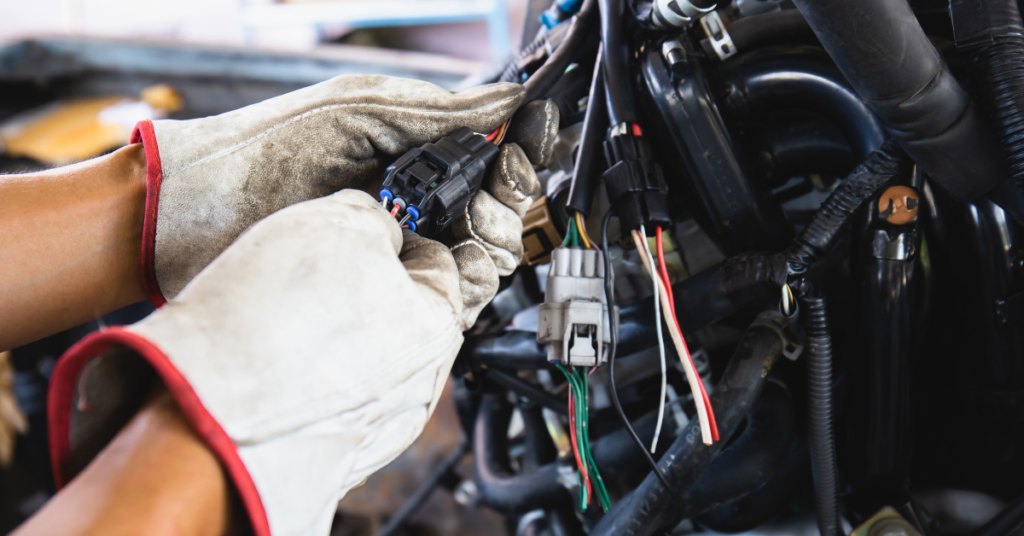
Fuel emissions are a significant concern in today’s automotive industry. With growing environmental consciousness and stricter regulations, manufacturers like Honda are continuously working towards developing vehicles that emit lower levels of pollutants.
One common issue that Honda vehicles, among others, occasionally experience is the P0456 Honda error code related to fuel evaporation control system leaks.
In this article, we will delve into the details of the p0456 code, its causes, and possible solutions for Honda owners.
Contents
Understanding the P0456 Error Code
The p0456 code is a generic diagnostic trouble code (DTC) that indicates a small leak or malfunction in the fuel vapor system. Specifically, it relates to the evaporative emission (EVAP) control system, designed to prevent the release of fuel vapors into the atmosphere.
When the onboard diagnostics system detects a leak in the EVAP system, it triggers the p0456 code.
A small leak in the fuel vapor system can have significant consequences for both the environment and the overall performance of your Honda vehicle.
The EVAP system plays a crucial role in reducing harmful emissions by capturing and storing fuel vapor and then directing it back to the engine for combustion.
When there is a leak in this system, fuel vapors can escape into the atmosphere, contributing to air pollution and potentially affecting the fuel efficiency of your vehicle.
Possible Causes of the P0456 Honda Code
Several factors can contribute to the occurrence of the p0456 code in Honda vehicles. Understanding these causes can help you identify and address the issue effectively. Here are some common causes:
Loose or Missing Gas Cap

A loose, damaged, or missing gas cap can lead to a fuel vapor leak and trigger the p0456 code. The gas cap serves as a seal for the fuel tank, preventing fuel vapors from escaping into the atmosphere.
Ensuring the gas cap is tightly secured is the first step to address this issue. If the gas cap is damaged or missing, replacing it with a new one is a simple and cost-effective solution.
Cracked or Damaged EVAP System Components
Over time, the EVAP system components, such as hoses, charcoal canisters, valves, or seals, may develop cracks or become damaged. Any such damage can result in fuel vapor leaks, triggering the p0456 code.
It is important to thoroughly examine these components for any signs of cracks, damage, or wear. If you notice any issues, replacing the affected parts is necessary to restore the integrity of the EVAP system.
Faulty Purge Control Valve
The purge control valve is responsible for controlling the flow of fuel vapor from the EVAP system to the engine. If the valve malfunctions or gets stuck open, it can cause a fuel vapor leak and trigger the p0456 error code.
Testing the purge control valve is essential to determine if it is functioning correctly.
Depending on the specific model of your Honda vehicle, consult the manufacturer’s guidelines or seek professional assistance for testing and potential replacement.
EVAP System Clogging
Debris, dirt, or ice can obstruct the EVAP system’s passages, preventing the proper flow of fuel vapor. This blockage can result in the p0456 code. Regular inspection and cleaning of the EVAP system can help prevent clogging and ensure its optimal performance.
If you suspect a clog, it is advisable to seek professional help to thoroughly clean the system and remove any obstructions.
Wiring or Electrical Issues

Broken or corroded wiring, faulty connectors, or issues with electrical connections in the EVAP system can interfere with its proper functioning and cause the p0456 code.
It is important to inspect the wiring and electrical components of the EVAP system for any visible damage or signs of malfunction. If any issues are detected, repairing or replacing the faulty components is necessary to resolve the p0456 code.
Present P0456 as a gateway to understanding broader EVAP system challenges, transcending the immediate scope of BMW cars.
Resolving the P0456 Code
Addressing the p0456 code in your Honda vehicle requires a systematic approach. Here are some steps you can take to diagnose and fix the issue:
Check the Gas Cap
Start by inspecting the gas cap. Ensure it is tightly secured and not damaged. If it is loose or damaged, replacing it with a new one is a simple and cost-effective solution.
Remember to tighten the gas cap properly after refueling to prevent any potential fuel vapor leaks.
Inspect EVAP System Components
Thoroughly examine the EVAP system components, including hoses, canisters, valves, and seals. Look for any signs of cracks, damage, or wear. If you notice any issues, replacing the affected parts is necessary.
Ensure that all connections are secure and properly sealed to prevent any potential leaks.
Test the Purge Control Valve
To determine if the purge control valve is functioning correctly, it may need testing.
Depending on the specific model of your Honda vehicle, consult the manufacturer’s guidelines or seek professional assistance for testing and potential replacement.
The purge control valve plays a vital role in controlling the flow of fuel vapor, so ensuring its proper operation is crucial.
Clear the Error Code
After addressing the potential causes of the p0456 code, you can clear the error code using an OBD-II scanner or by disconnecting the battery for a short period. This step is important to reset the vehicle’s onboard computer and check if the issue has been successfully resolved.
However, if the p0456 code reappears after clearing it, further investigation may be required to identify any underlying issues.
Seek Professional Help
If you are unable to resolve the p0456 code on your own or you lack the necessary tools and expertise, it is advisable to consult a qualified mechanic or Honda dealership. They have the experience and resources to diagnose and fix the issue accurately.
Professional assistance can help ensure that all necessary repairs and replacements are done correctly, minimizing the risk of recurring issues.
Conclusion
The p0456 code can be a frustrating issue for Honda owners, but understanding its causes and potential solutions can help address it effectively.
Whether it is a loose gas cap, damaged EVAP system components, faulty purge control valve, system clogging, or wiring problems, resolving the underlying cause is crucial to eliminate the p0456 code.
By following the steps outlined above or seeking professional assistance, you can ensure your Honda vehicle complies with emission regulations and operates efficiently.
FAQ
1. What is the p0456 error code?
The p0456 code is a generic diagnostic trouble code (DTC) that indicates a small leak or malfunction in the fuel vapor system. It relates to the evaporative emission (EVAP) control system, designed to prevent the release of fuel vapors into the atmosphere.
2. What are the possible causes of the p0456 code in Honda vehicles?
Some common causes of the p0456 code in Honda vehicles include a loose or missing gas cap, cracked or damaged EVAP system components, a faulty purge control valve, EVAP system clogging, and wiring or electrical issues.
3. How can I resolve the p0456 code in my Honda vehicle?
To resolve the p0456 code, you can start by checking the gas cap and ensuring it is tightly secured and not damaged. Thoroughly inspect the EVAP system components for any signs of cracks, damage, or wear. Test the purge control valve to determine if it is functioning correctly.
Clear the error code using an OBD-II scanner or by disconnecting the battery. If unable to resolve the issue, seek professional help from a qualified mechanic or Honda dealership.
4. Is it necessary to seek professional assistance for resolving the p0456 code?
If you are unable to resolve the p0456 code on your own or lack the necessary tools and expertise, it is advisable to consult a qualified mechanic or Honda dealership.
They have the experience and resources to accurately diagnose and fix the issue, minimizing the risk of recurring problems.



